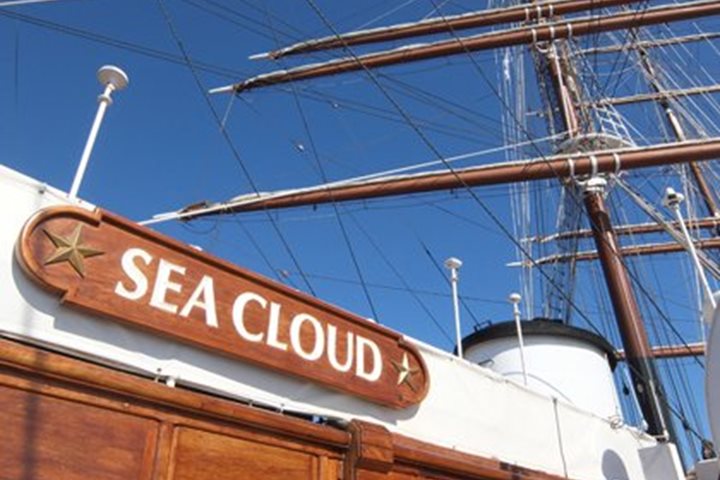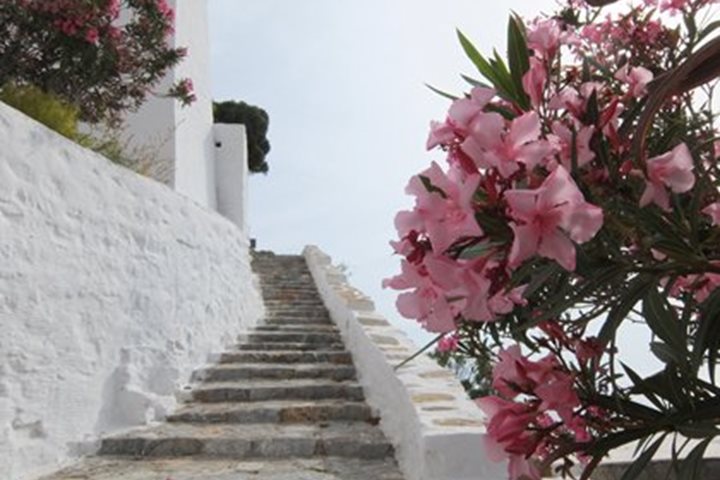We docked in Bodrum, Turkey at 8 a.m. under an azure blue sky with not a cloud in sight. The weather was warm but a lovely breeze was in the air. This wonderful port city in the Turkish province of Mugla has become a popular resort for yachting and a number of beautiful boats were in the marina. As we approached the picturesque harbor, the 15th century fortified castle of Saint Peter, founded by the Knights of Saint John Hospitaler, became increasingly prominent. This castle begun in 1406 and added to over the next 80 years was built on the same site as ancient temples. The Knights of Saint John were one of the orders of clerical Christian warriors. This particular group was founded to tend to the wounded crusaders who sought to free the Hold Land from the Muslims. The nursing order eventually evolved into a warrior elite drawing its members from the major European nations. The Castle of Saint Peter has prominent fortified and crenelated towers dedicated to the English, French, Italian, and Spanish nations.
Bodrum is the ancient city of Halikarnassus, and slightly north of the Castle is the site of the famous mausoleum of King Mausolus. Now largely a ruin having been despoiled for its marble and building stone, the mausoleum was so grand that it was considered one of the seven wonders of the ancient world. Perhaps one of Bodrum’s most famous sons is the “father” of history Herodotus, who was born here in 484. Herodotus was an inveterate traveler and left Bodrum and sailed all over the eastern Mediterranean. He left us a very readable account of his travels.
We began our visit of this wonderful city with a walk along the colorful shop-filled waterfront. The sea and beautiful beaches were inviting on our left and attractive shops on our right. The castle of Saint John is the largest underwater archaeology museum in the world. It is the brainchild of the “father of underwater archaeology,” Dr. George Bass, Professor of Archaeology at Texas A&M University. The National Geographic Society was an early supporter of Dr. Bass’s groundbreaking studies. One of the highlights of our visit to the museum was the display of the Ulu Burun shipwreck. Filled with amphorae, copper, and tin ingots, the Ulu Burun allowed us a window into trade and commerce in the 12th century BCE. One display case held the most delicately made collection of fine glass vases, perfume and unguent jars colored with lapis lazuli and golden copper hues. The Castle of Saint Peter finally fell to the Ottomans in 1523, along with Rhodes under the leadership of the great Ottoman Sultan Süleiman the Magnificent. The Knights of Saint John relocated to Valetta, Malta.
After leaving the museum, most of us took the opportunity to explore the bazar and do some shopping. Bodrum is particularly famous for its leather goods, carpets and ceramics. I saw a number of my fellow guest heavily laden with purchases as we walked back to Sea Cloud for lunch. After lunch I gave a lecture, “Damned to the Lions: Belief, the Law, and Persecution in the Ancient World.” The talk illustrated the jurisprudential system of the Roman Empire and how they managed a very pluralist empire. This evening after a wonderful dinner we were delighted with the exploits of Irving Johnson and his fabulous sailing journey around Cape Horn in a “Class A Number 1 Storm.” After the film some of us remained at the lido bar and listened to Peter and his remarkable piano playing. Others pooped from such a rich day slept soundly dreaming of the day’s events and preparing ourselves for the morrow.









